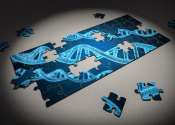Researchers unravel 3-D locomotion of the nematode C. elegans
Jerzy Blawzdziewicz, professor, associate chairman and director of graduate studies in the Department of Mechanical Engineering, and Siva Vanapalli, an associate professor and Bill Sanderson faculty fellow in the Department ...









